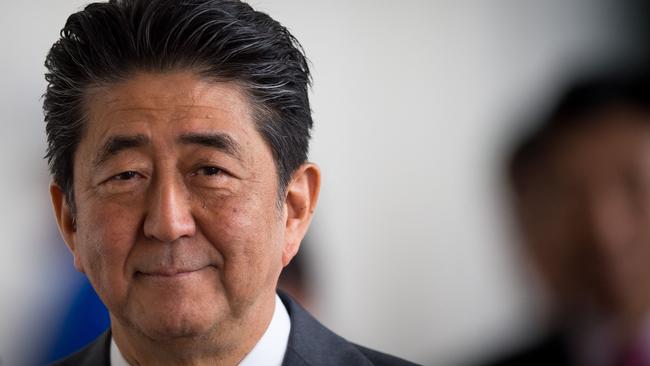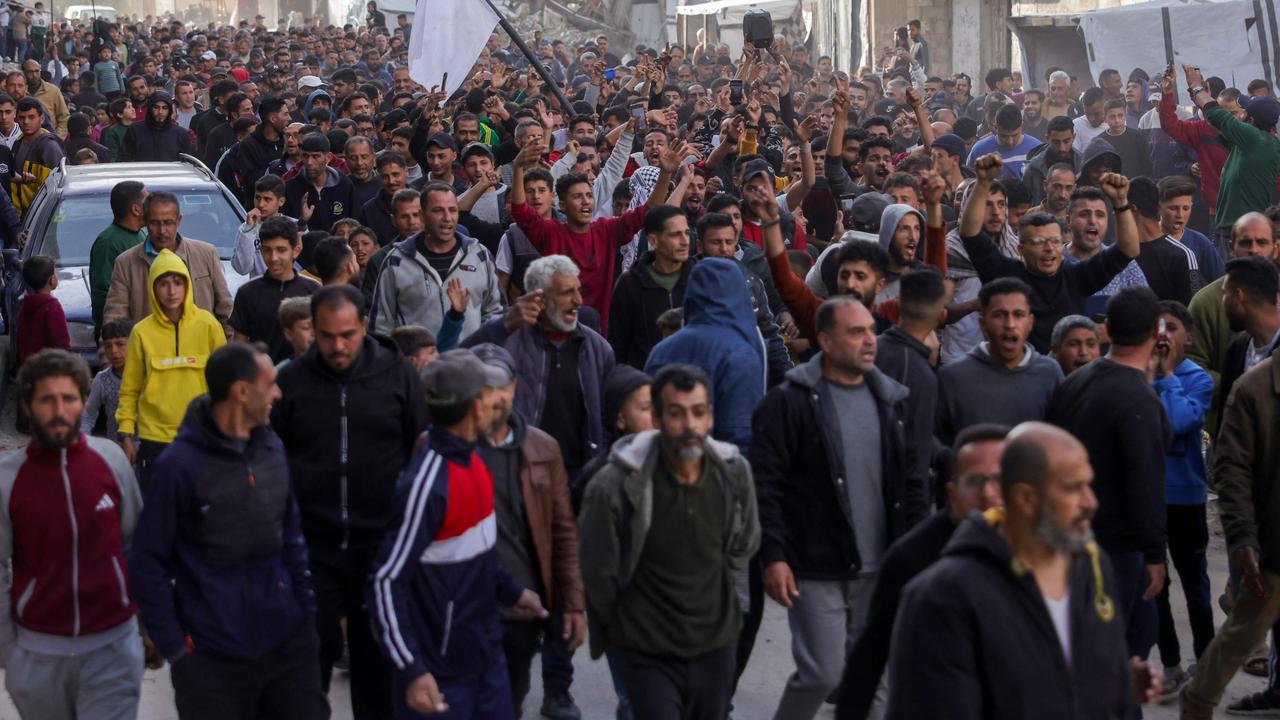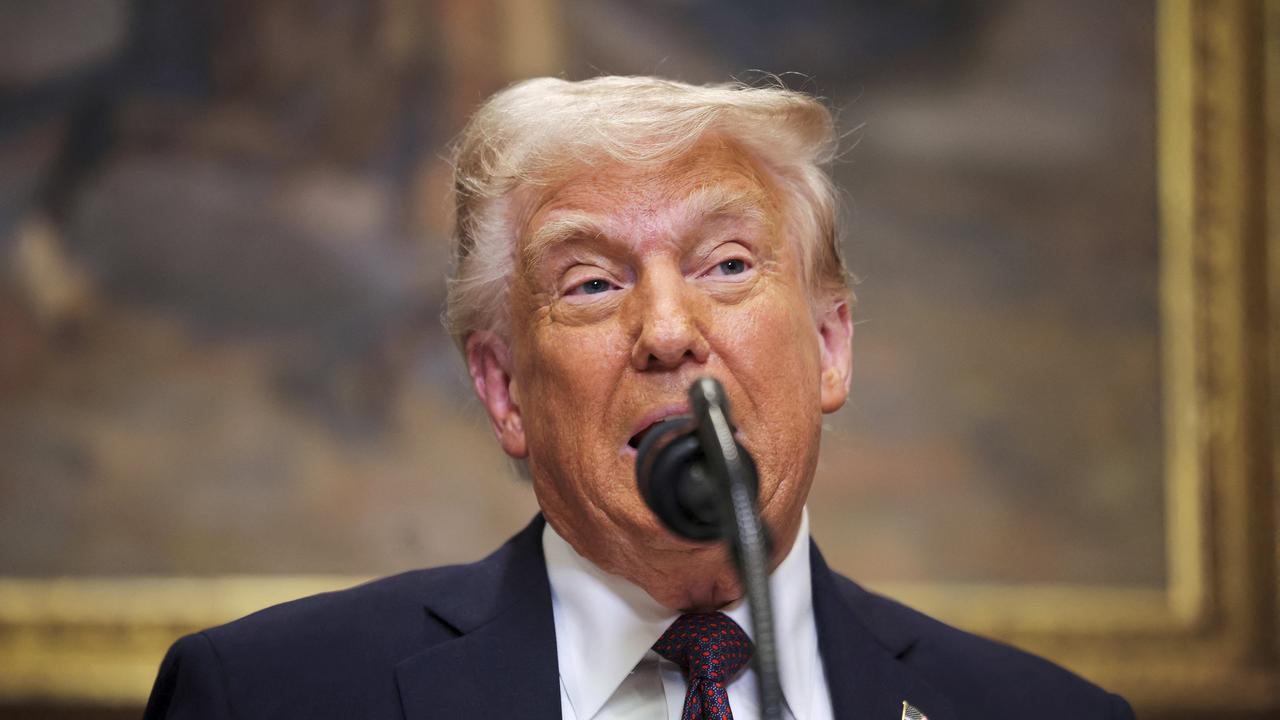Shinzo Abe, enduring leader who bolstered Japan’s defence, dies at 67
Shinzo Abe, who served longer than anyone as Japan’s PM and bolstered the nation’s defence while struggling to lift its economy, has died at the hands of an assassin’s bullet.

Shinzo Abe, who served longer than anyone as Japan’s prime minister and bolstered the nation’s defence while struggling to lift its economy, died on Friday at the hands of an assassin’s bullet. He was 67.
Mr Abe served as prime minister from December 2012 to September 2020, the longest consecutive reign since Japan created a European-style government led by a prime minister in the late 19th century. He also occupied the job in an earlier stint from 2006 to 2007 and held the record for most total days in office.
The heir to a political dynasty, Mr Abe championed a revival in the economic and military strength of a country that began to stagnate in the 1990s after its meteoric rise from defeat in World War II.
“Ladies and gentlemen, Japan is back,” Mr Abe said in a February 2013 speech in Washington.
“Japan is not, and will never be, a tier-two country.”
He was a proponent of the US-Japan military alliance and built a rapport with then-president Donald Trump, playing golf five times together and speaking dozens of times on the phone.
Earlier, in 2016, he had guided then-president Barack Obama to Hiroshima, in the first visit by a US president to the site of the atomic bombing, and he was the first Japanese leader to address a joint session of the US Congress.
“What should we call this, if not a miracle of history? Enemies that had fought each other so fiercely have become friends bonded in spirit,” Mr Abe said in the April 2015 speech to US politicians.
Months later, he pushed through legislation allowing Japanese troops to co-operate more closely with the US outside Japan’s borders.
“If you put the power of the US Navy and Japan’s maritime self-defence forces together, then one plus one will finally become two,” he told The Wall Street Journal that year.
“Japan can keep the power balance of this region if Japan and the US join forces.”
In the latter years of his term, Mr Abe continued beefing up the military to respond to the threat of a North Korean missile attack or Chinese assault on disputed islands controlled by Japan in the East China Sea. And he was a power behind the current government of Prime Minister Fumio Kishida, pushing Mr Kishida to take hawkish stands.
Mr Abe’s government decided to revamp two flat-top destroyers for use by jet fighters that can take off and land vertically – Japan’s first de facto aircraft carrier since World War II. It purchased the largest fleet of F-35 fighters outside the US and launched a network of satellites capable of guiding newly procured cruise missiles to shoebox-sized targets.
However, Mr Abe was unable to achieve one of his most sought-after goals, inherited from the days when his grandfather, Nobusuke Kishi, was prime minister. That was to revise Japan’s “peace constitution,” adopted in 1947 when the nation was under US occupation after losing World War II. Mr Abe wanted to revise Article 9, which prohibits Japan from possessing “war potential”, to make clear that it was entitled to maintain military forces for self-defence.
His effort to revive Japan’s economy, known as Abenomics, met with mixed results and took a blow near the end of his term from the Covid-19 pandemic.
Perhaps the most significant part of Abenomics was carried out by the Bank of Japan under its governor, Haruhiko Kuroda, who was hand-selected by Mr Abe in 2013 and continues to hold the job.
Mr Kuroda’s monetary easing included annual purchases of hundreds of billions of dollars in government bonds and large purchases of funds consisting of shares in companies listed on the Tokyo Stock Exchange. In 2016, Mr Kuroda added negative interest rates to his policy mix, trying to encourage lending.
The policies lifted the stock and real-estate markets and helped secure full employment. Mr Abe would boast at election time that there were more available jobs than job seekers in all of Japan’s 47 prefectures.
But strong growth and 2pc inflation – Mr Kuroda’s target – proved elusive until this year, when it came about not because of a robust economy but because of soaring costs for oil, gas, food and other Japanese imports. Wages rose slowly, and Japan maintained a reputation as a place with hardy corporate survivors but few innovative newcomers.
Growth was hit by two tax increases – planned under an earlier government – in which Mr Abe reluctantly acquiesced. The national sales tax rose in 2014 to 8pc from 5pc and then to 10pc on October 1, 2019. After each rise, consumer spending took a beating. And the number of new births fell faster than ever, as economic uncertainty stymied Mr Abe’s push to improve Japan’s dire demographic picture.
Just as Japan was beginning to recover from the second increase, it was slammed by the coronavirus pandemic. At the nadir of the pandemic, in the second quarter of 2020, the nation’s economy was smaller than it had been when Mr Abe took office in 2012.
“While he made some significant reforms by patiently deploying the power he had accumulated, he was unable to reverse the underlying causes of national decline,” wrote Japan analyst Tobias Harris in his biography of Mr Abe published in late 2020.
He is survived by his wife, Akie. The couple had no children. Shinzo Abe was born on September 21, 1954, in Tokyo. At the time, his grandfather, Kishi, was staging a political comeback after spending three years in prison as a suspected war criminal.
Kishi later served as prime minister from 1957 to 1960, resigning after pushing through a security treaty with the US that affirmed American forces would defend Japan if it were attacked.
Kishi’s daughter, Yoko, married Shintaro Abe, the son of a former member of parliament from the same region as the Kishi family. Entering the family business of politics, Shintaro Abe rose to become foreign minister and nearly won the prime minister’s job in 1987. Two years later, he fell ill with cancer, and he died in 1991.
Shinzo Abe, the second son of Shintaro and Yoko Abe, was elected to parliament for the first time in 1993, taking over his father’s seat.
A less ambitious student than his father and grandfather, who had attended the school now called the University of Tokyo, Shinzo Abe went to Seikei University in Tokyo and studied at the University of Southern California without earning a degree.
Once he ascended to parliament, Mr Abe’s career soon shifted into higher gear. Rising through the ranks of the Liberal Democratic Party, he became a top aide to prime minister Junichiro Koizumi in 2001 and played a behind-the-scenes role in bringing home five Japanese who had been abducted by North Korea.
By 2006, he was prime minister, succeeding the popular Mr Koizumi. But he couldn’t get his footing in a blizzard of scandals.
Then a longstanding inflammatory bowel ailment flared up, leaving Mr Abe in pain. After just a year, he quit, citing his health.
No Japanese prime minister had made a comeback since the 1950s. But Mr Abe got new medicine for his illness and rebuilt a reputation as an advocate of national revival, while studying up on an economic program that he believed would end Japan’s debilitating deflation.
He was elected leader of the Liberal Democratic Party, then in opposition, in September 2012 and led it to victory in parliamentary elections three months later. On December 26, 2012, parliament elected him prime minister again.
Reflecting his nationalist roots, a year later he visited the Yasukuni Shrine, where some class-A war criminals from World War II are honoured. The US expressed its disappointment, and Mr Abe didn’t do it again until three days after he resigned on September 16, 2020.
Though he advocated constitutional revision at every election, Mr Abe was never able to overcome public scepticism and resistance from politicians, including a few in his own ruling Liberal Democratic Party. Many opponents argued that revision would provoke international suspicion and wasn’t necessary because Japan already has a de facto military called the Self-Defence Forces.
The coronavirus left a cloud over his final months in office. While the pandemic in Japan was far less devastating than in the US and western Europe, Mr Abe took criticism for an uneven response. Citing a return of his intestinal condition, he announced his resignation in August 2020 and handed the reins the next month to his longtime top aide, Yoshihide Suga.
Nonetheless, Mr Abe maintained he had overturned a mood of pessimism that had afflicted Japan for decades. He reinvigorated the nation’s diplomacy by visiting more than 80 countries and led a smooth transition in 2019 to the era of Reiwa, or “beautiful harmony”, under Emperor Naruhito, who succeeded to the throne after his father, Akihito, became the first emperor in 200 years to abdicate.
“Japan is no longer the Japan of the past. We have succeeded in completely breaking through the wall of resignation,’” Mr Abe told parliament in January 2020.
“We will create a Japan that shines on the world’s centre stage … Over the last seven years I have given my all to moving towards that dream.”
The Wall Street Journal



To join the conversation, please log in. Don't have an account? Register
Join the conversation, you are commenting as Logout